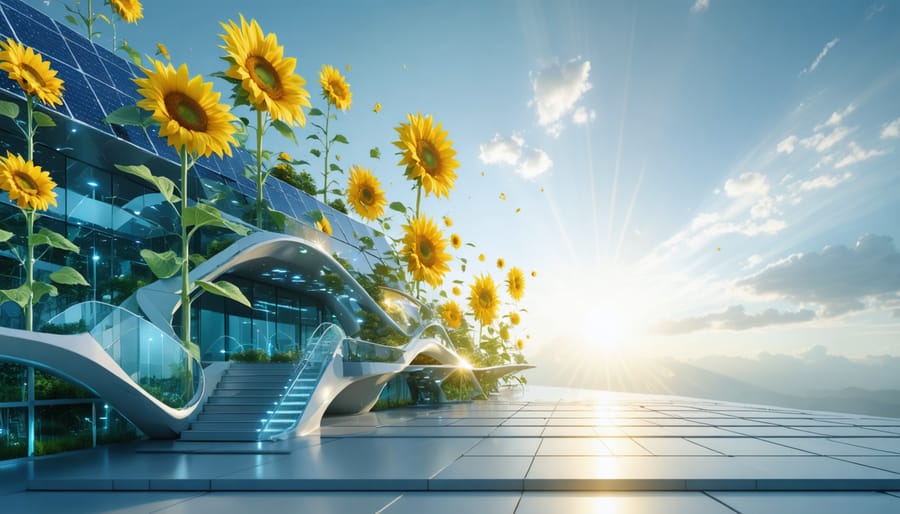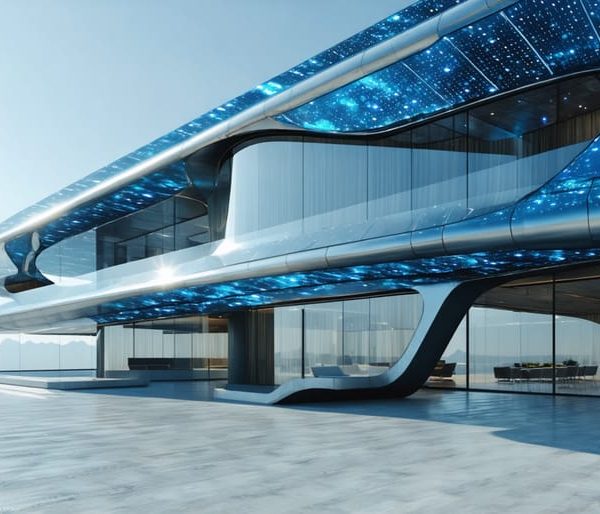Smart Solar Facades That Adapt to Nature (And Slash Your Energy Bills)
Transform your building into a living, breathing entity with adaptive facades – the cutting-edge intersection of solar architecture design principles and smart technology. These intelligent building skins automatically respond to environmental conditions, optimizing energy efficiency while maintaining optimal indoor comfort. Like a sunflower tracking the sun’s movement, adaptive facades adjust their configuration throughout the day, reducing heating and cooling costs by up to 40% compared to conventional buildings.
Modern adaptive facades integrate seamlessly with existing structures, using smart materials and sensors to regulate light, heat, and ventilation. Whether it’s electrochromic glass that tints on demand or kinetic shading elements that shift position based on solar angles, these systems represent the future of sustainable architecture. For commercial building owners and environmentally conscious homeowners alike, adaptive facades offer an innovative solution that combines aesthetic appeal with remarkable energy savings.
The investment in adaptive facade technology not only future-proofs your building against rising energy costs but also demonstrates a commitment to sustainable design that resonates with today’s environmentally aware occupants and customers.
How Adaptive Solar Facades Transform Your Home
Dynamic Sun-Tracking Panels
Dynamic sun-tracking panels represent one of the most innovative sustainable building features in modern architecture. These intelligent panels automatically adjust their position throughout the day to capture maximum sunlight, much like sunflowers following the sun’s path across the sky. Using advanced sensors and motorized systems, the panels tilt and rotate to maintain optimal angles relative to the sun’s position, increasing energy generation by up to 40% compared to static panels.
The tracking system operates on two axes: vertical and horizontal. In the morning, the panels face east and gradually rotate westward as the day progresses. They also adjust their tilt angle to match the sun’s elevation, ensuring peak exposure during all daylight hours. This continuous optimization means your building can harness solar energy from dawn to dusk, significantly reducing reliance on traditional power sources.
What makes these panels truly remarkable is their ability to adapt to changing weather conditions. Built-in light sensors can detect cloud cover and adjust panel positioning to capture diffused light more effectively, maximizing energy collection even on overcast days.
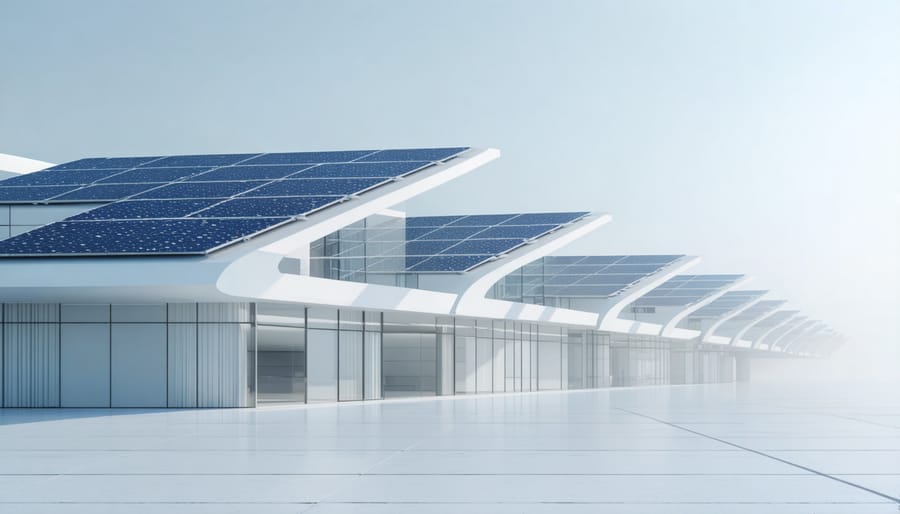
Smart Temperature Management
The adaptive facade’s intelligent temperature management system works like your home’s personal climate conductor, orchestrating a perfect indoor environment throughout the year. Using a network of sensors and smart controls, the system continuously monitors both indoor and outdoor conditions to maintain optimal comfort while maximizing energy efficiency. This sophisticated approach to natural climate control automatically adjusts the facade’s components based on real-time data.
During summer months, the system activates shading elements when intense sunlight is detected, preventing excess heat gain. In winter, it optimizes solar exposure to warm your space naturally, reducing heating costs. The system also factors in humidity levels and air quality, automatically triggering ventilation when needed.
What makes this technology truly remarkable is its ability to learn from your preferences and daily patterns. Over time, it fine-tunes its responses to create your ideal indoor climate while minimizing energy consumption. Building owners typically report a 20-30% reduction in heating and cooling costs after installation.
Real Energy Savings with Adaptive Facades
Seasonal Performance Benefits
Adaptive facades truly shine when it comes to maximizing solar energy collection throughout the year. During summer months, when the sun sits higher in the sky, the system automatically adjusts its panels to a more horizontal position, reducing excessive heat gain while still capturing optimal sunlight for energy production. This helps prevent overheating inside the building while maintaining efficient power generation.
In winter, the facade shifts to a more vertical orientation, allowing the lower-angled sunlight to penetrate deeper into the building. This strategic positioning helps warm the interior spaces naturally, reducing heating costs while continuing to generate electricity. The system’s ability to track and respond to seasonal sun patterns ensures year-round performance optimization.
Spring and fall benefit from the facade’s dynamic nature as well. During these transitional seasons, when weather patterns can be unpredictable, the system continuously adjusts to changing conditions. On cloudy days, the panels can shift to capture indirect light more effectively, while clear days allow for maximum direct sunlight collection.
This seasonal adaptability translates into significant energy savings. Buildings with adaptive facades typically see a 25-30% reduction in annual energy costs compared to traditional static systems. The automated adjustments require no manual intervention, making it a truly set-and-forget solution for year-round energy efficiency.
Monthly Utility Savings
Real-world examples demonstrate impressive utility savings with adaptive façade systems. A typical 2,500-square-foot commercial building in California reported a 32% reduction in annual cooling costs after installing an adaptive façade, translating to approximately $3,800 in yearly savings.
Let’s break down the monthly savings potential:
– Summer months (June-September): $400-600 per month
– Spring/Fall (March-May, October-November): $250-350 per month
– Winter months (December-February): $150-200 per month
The Johnson Building in Denver serves as an excellent case study, where adaptive façade implementation led to a 45% decrease in HVAC energy consumption. Their monthly utility bills dropped from an average of $4,200 to $2,310, resulting in nearly $23,000 annual savings.
For residential applications, homeowners report average monthly savings of $80-120 on cooling costs during peak summer months. A Seattle homeowner, Sarah Martinez, shares: “Our adaptive façade system paid for itself in just over three years. We’re saving about $1,200 annually on energy bills, and our home stays comfortable year-round.”
Factors affecting savings include:
– Local climate conditions
– Building size and orientation
– Existing energy efficiency measures
– Utility rates in your area
– System optimization and maintenance
To maximize savings, many property owners combine adaptive façades with smart building management systems, achieving up to 60% greater efficiency compared to traditional building envelopes.
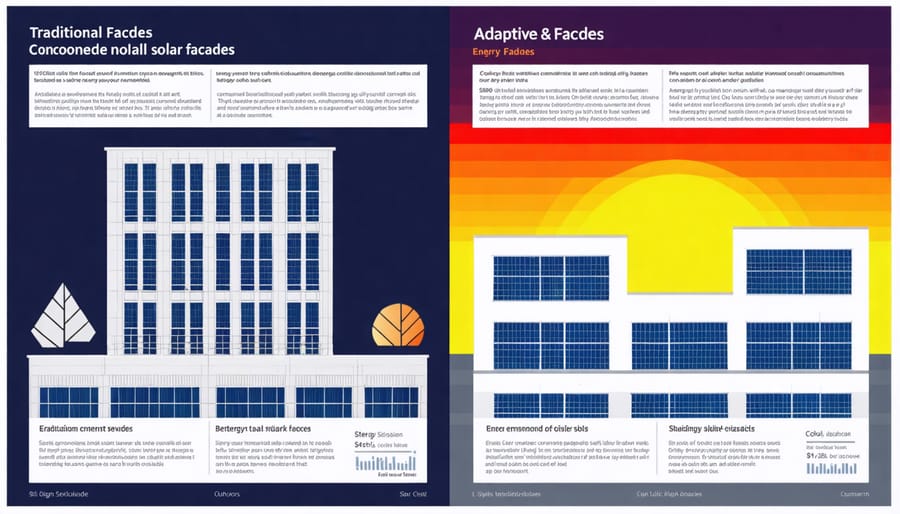
Installation and Maintenance Made Simple
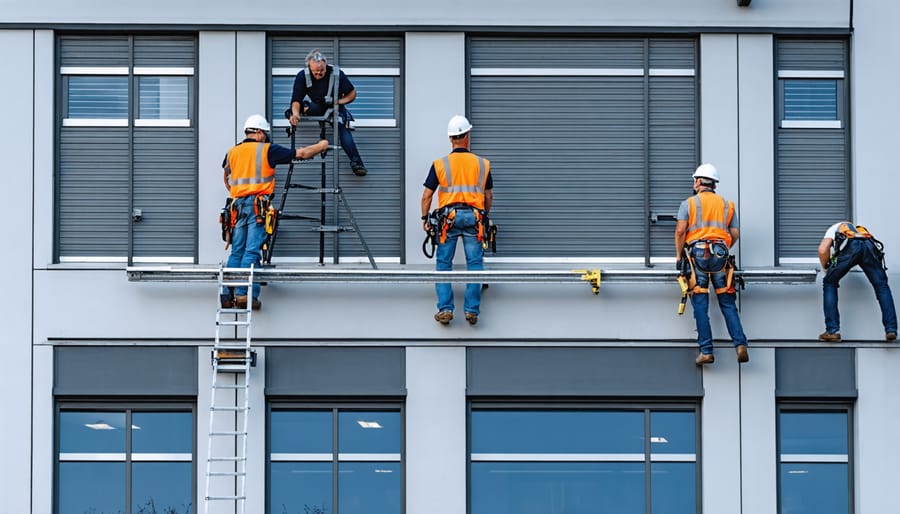
Professional Installation Process
The installation of an adaptive facade system requires careful planning and professional expertise. Here’s what you can expect during the installation process:
First, a thorough site assessment is conducted to evaluate your building’s structural integrity and determine the optimal placement of the adaptive components. This includes analyzing sun patterns, wind conditions, and existing building systems.
Next, the support framework is installed. This includes mounting brackets, rails, and any necessary reinforcement to ensure the facade can handle both static and dynamic loads. The building’s electrical system is then prepared to accommodate the new adaptive elements.
The smart facade panels are carefully positioned and secured to the framework. Each panel is individually tested to ensure proper movement and response to environmental conditions. Sensors are strategically placed throughout the system to monitor various parameters like temperature, light levels, and weather conditions.
The control system installation follows, including the central processing unit and necessary wiring. This brain of the system is programmed with customized algorithms based on your building’s specific needs and local climate patterns.
Finally, the system undergoes comprehensive testing and calibration. Technicians verify that all components work together seamlessly, adjusting settings as needed. The installation team then provides detailed training on system operation and maintenance procedures.
The entire process typically takes several weeks, depending on your building’s size and complexity. Professional installation ensures optimal performance and longevity of your adaptive facade system.
Easy Maintenance Tips
Keeping your adaptive facade system in top condition doesn’t have to be complicated. With these simple maintenance tips, you can ensure optimal performance and longevity of your investment.
Start with regular visual inspections every three months. Check for any debris, dust, or dirt accumulation on the facade panels and sensors. A clean surface ensures maximum light transmission and proper function of the automatic adjustment mechanisms.
Clean the panels using soft microfiber cloths and mild, non-abrasive cleaners. Avoid harsh chemicals that might damage the protective coatings. For higher installations, consider hiring professional cleaners who specialize in facade maintenance.
Monitor the control system’s performance through your building management interface. Look for any unusual patterns or delayed responses in the facade’s movement. If you notice irregularities, contact your system provider for a professional assessment.
Lubricate moving parts annually using manufacturer-recommended products. This includes hinges, actuators, and other mechanical components that enable the facade’s adaptive movements.
Check weather seals and gaskets twice a year, particularly before extreme weather seasons. Replace any worn or damaged seals promptly to maintain the system’s energy efficiency.
Keep software and firmware up to date by installing recommended updates. These often include performance improvements and security enhancements that help your facade operate more efficiently.
Document all maintenance activities and any system changes. This record helps track performance patterns and simplifies troubleshooting if issues arise.
Choosing the Right System for Your Home
Selecting the right adaptive facade system for your property requires careful consideration of several key factors. Start by assessing your local climate conditions, as this will significantly impact the type of system that will work best for your needs. In regions with intense sunlight, prioritize systems with advanced shading capabilities, while areas with varying temperatures might benefit more from thermal regulation features.
Consider your building’s architectural style and structural limitations. Some properties may be better suited for modular panel systems, while others might benefit from integrated smart glass solutions. Your budget also plays a crucial role – while initial costs may be higher for more sophisticated systems, the long-term savings in energy costs often justify the investment.
Energy efficiency goals should guide your decision-making process. An energy-efficient home design incorporating adaptive facades can reduce heating and cooling costs by up to 40%. Consider systems that offer automated controls and smart home integration for optimal performance and convenience.
Don’t forget to evaluate the maintenance requirements of different systems. While some solutions may require minimal upkeep, others might need regular professional servicing. Look for warranties and after-sales support from reputable manufacturers to ensure long-term reliability.
Finally, consult with certified professionals who can assess your specific needs and recommend appropriate solutions. They can help you understand local building codes, available tax incentives, and potential installation challenges. Remember that the right system should balance performance, aesthetics, and cost-effectiveness while meeting your sustainability goals.
Adaptive facades represent a groundbreaking advancement in sustainable building design, offering a perfect blend of technology and environmental consciousness. By dynamically responding to environmental conditions, these systems significantly reduce energy consumption while enhancing occupant comfort. The benefits are clear: lower utility bills, reduced carbon footprint, and improved building performance. Whether you’re a homeowner looking to modernize your residence or a property manager seeking to optimize building efficiency, adaptive facades offer a smart investment in your property’s future. The time to embrace this technology is now – as energy costs continue to rise and environmental concerns grow, adaptive facades provide a practical solution that pays dividends both financially and environmentally. Take the first step toward a more sustainable future by exploring how an adaptive facade can transform your building into a model of modern efficiency.

